Last week I advised myself not to set overly ambitious garden goals for 2020. I must have been under the weather. This week, I’m back to normal, aiming to accomplish most of the goals I set myself even while acknowledging that doing that will mostly likely be impossible.
Although I set six goals for the year, I made only one resolution, which was to photograph one part of the garden every month. Anne Wareham of ThinkinGardens, a site that posts interesting and provocative blogs from around the world, did this last year in her own garden, Veddw, and her idea inspired me to do the same. (I highly recommend subscribing to both blogs and to visiting Veddw if you are in Wales or anywhere nearby.)
So far I’m on track. I took photos of the Cascade from several points of view in January and February and will take the March photos within a day or two.
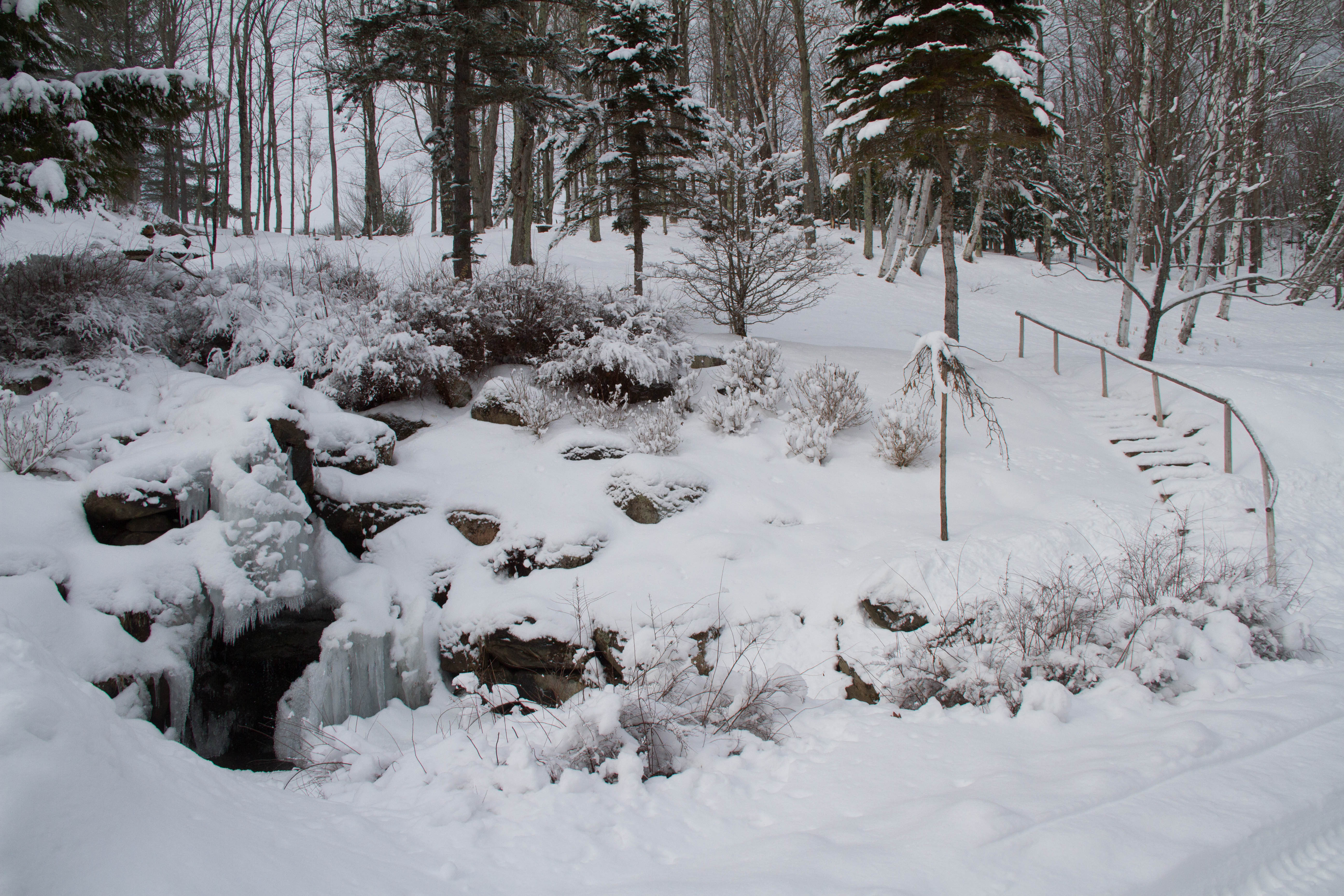
The Cascade in early January 2020.
The point of taking these photos regularly is to see how an area changes over the year and, by studying the photos carefully, to assess whether and how the area can be improved.
Covered as it is now with snow and ice, I can’t discover anything about the plants at the Cascade, regardless of how closely I examine the images. But I can admire the patterns that water makes when it freezes.
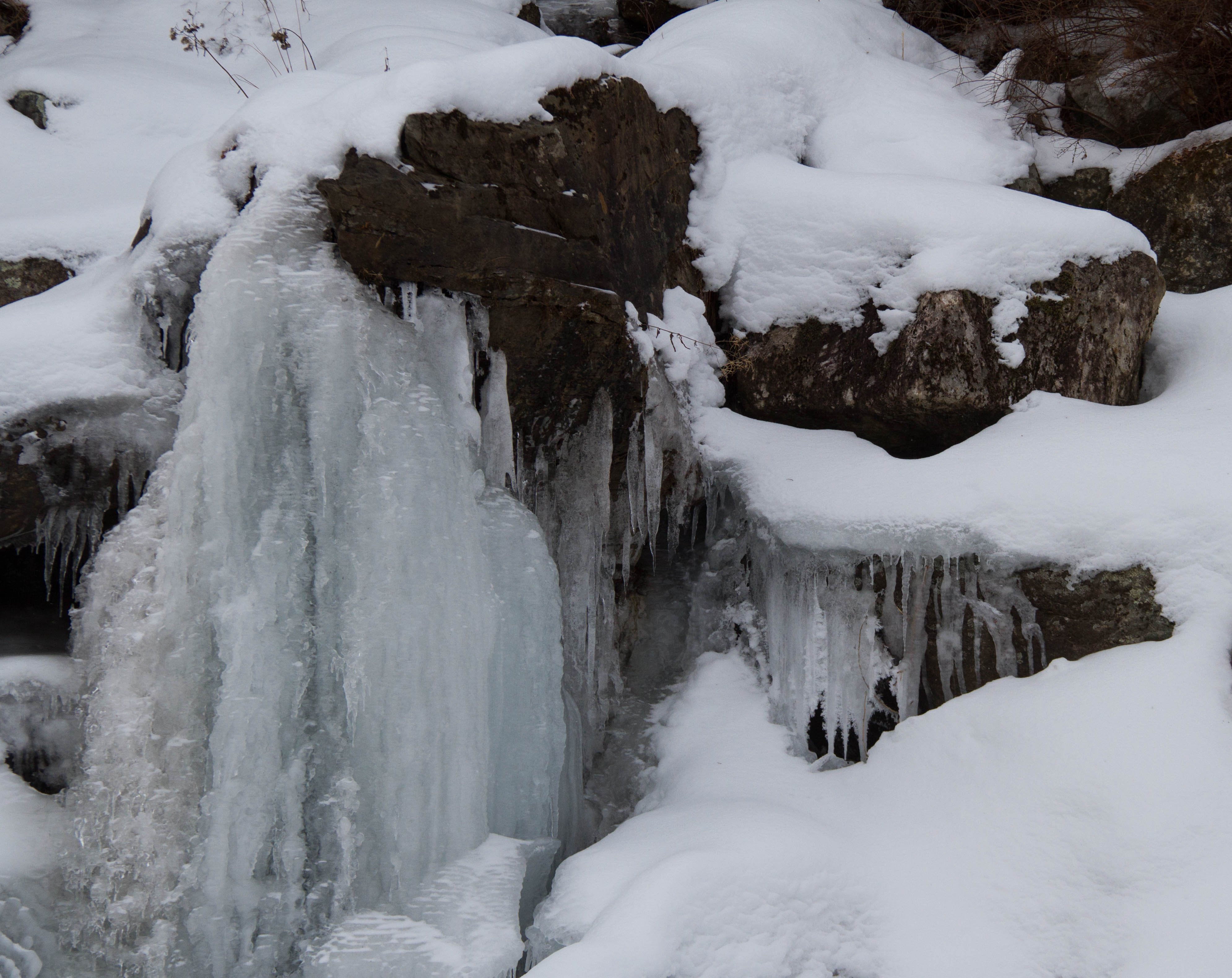
I took this close-up of frozen water in February as part of a group of photos showing the Cascade from different angles.
Much more useful will be my spring to fall photographs when I can truly assess the plantings. Studying these photos afterwards will help me to notice things I miss on site. And believe me, I always miss something.
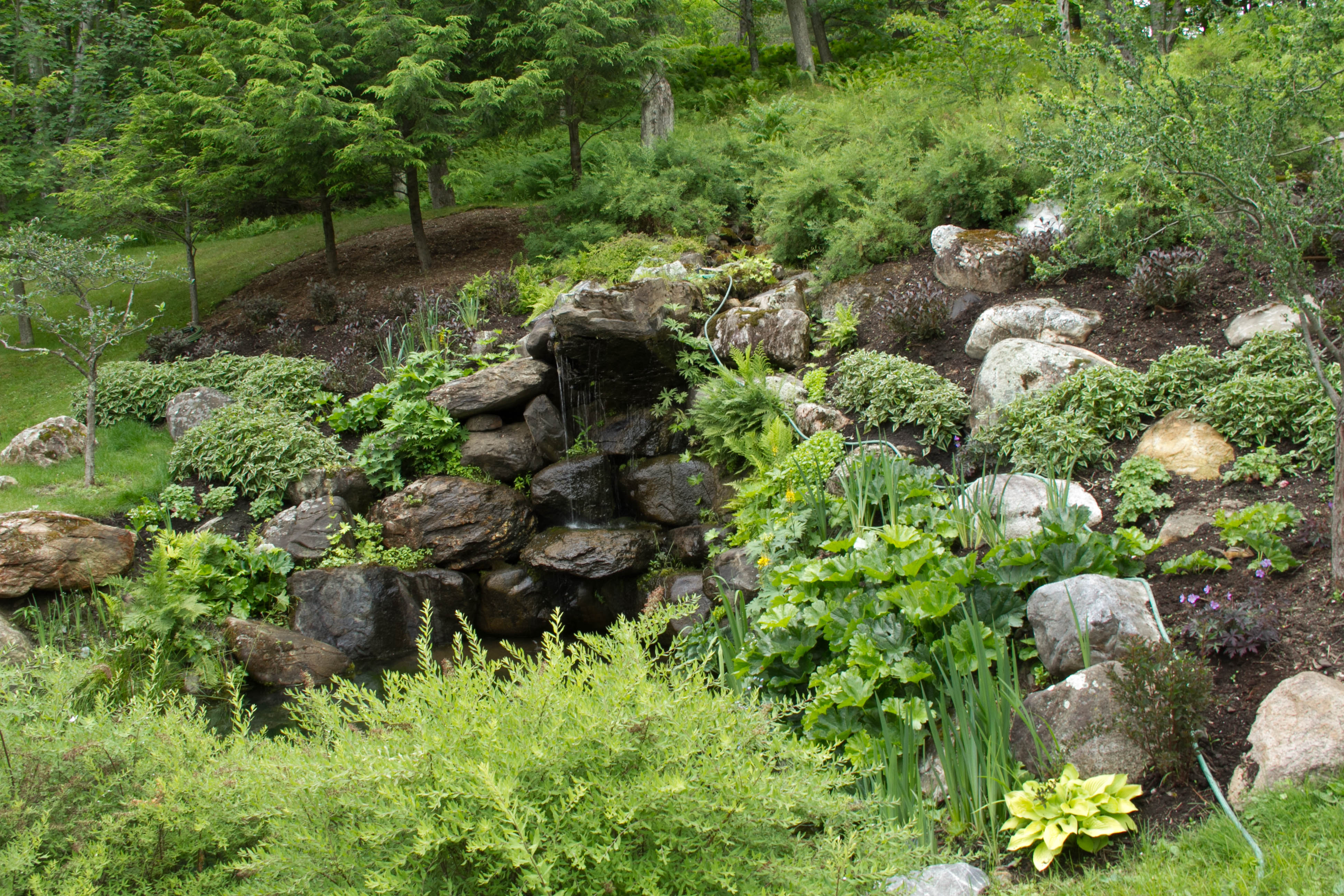
Cameras see everything. I took this photo to assess the area but didn’t even notice the hose until I looked at the photo afterwards.
In a talk I give about getting the most out of garden visits, I show a photograph of our Lower Garden in colour.
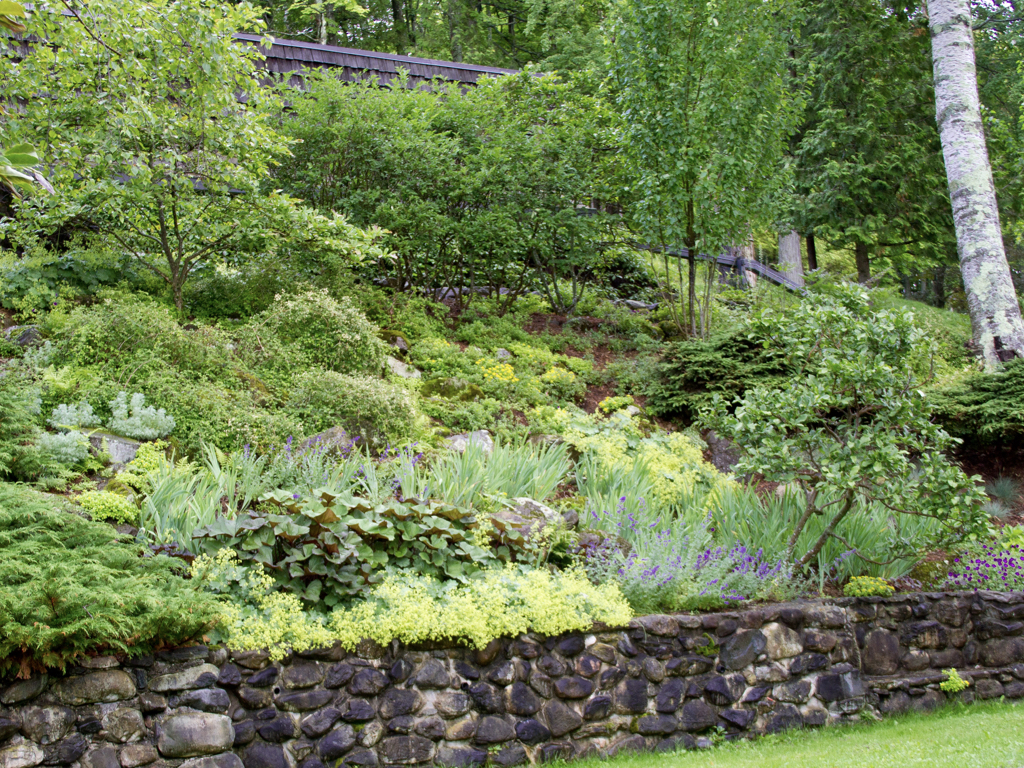
Part of the Lower Garden at Glen Villa
Then I show it in black and white.
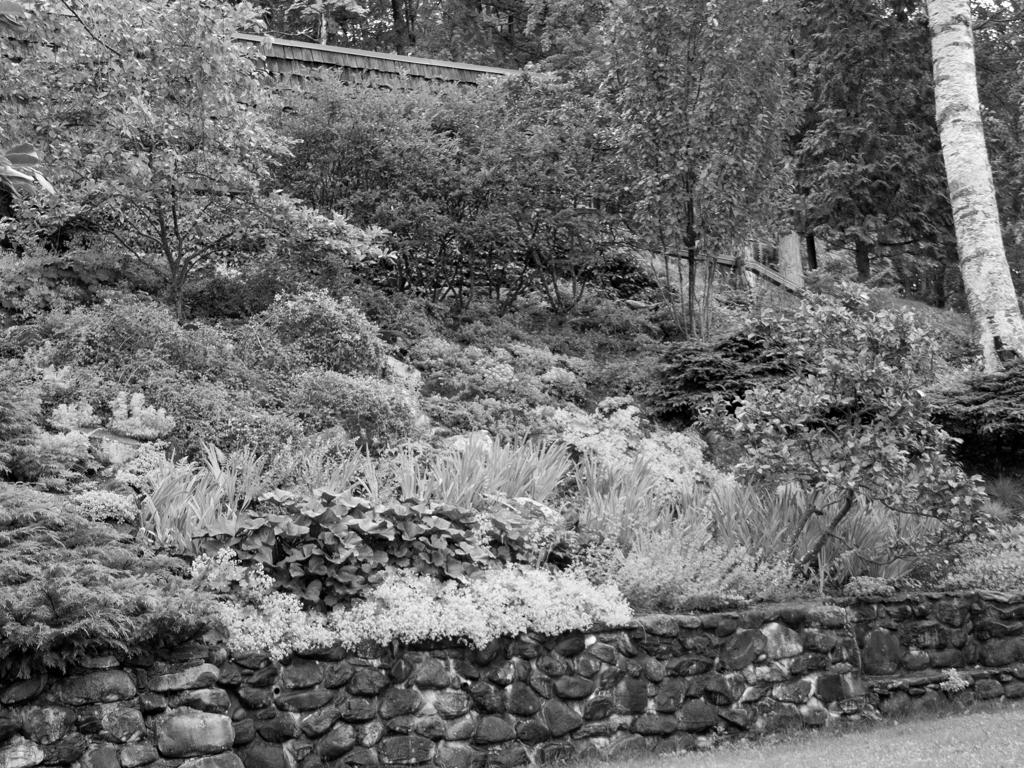
The same photograph, with the colour removed. This is easy to do on most computer photo programs. I use Lightroom.
Then I flip the black and white photo horizontally.
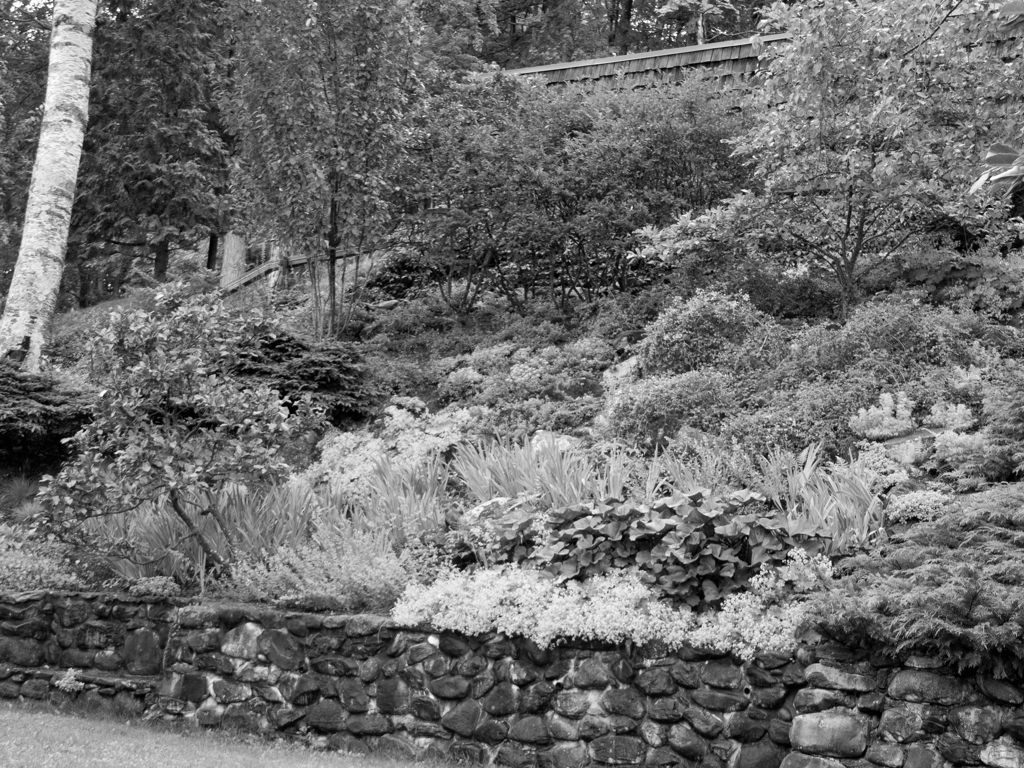
Flipped, the area looks totally different to me… I’m not accustomed to seeing it this way around.
I find that doing this is very helpful. I am able to focus more on shapes and textures when colour is removed, and when the scene is presented in an unfamiliar way, I see it with fresh eyes.
Studying photographs of gardens I visit is equally helpful. Often, there is simply too much to see or to absorb when you visit a garden, and looking closely at photos afterwards may allow you to identify details you missed on site. My photos of one English garden showed differences I’d totally missed during the visit.
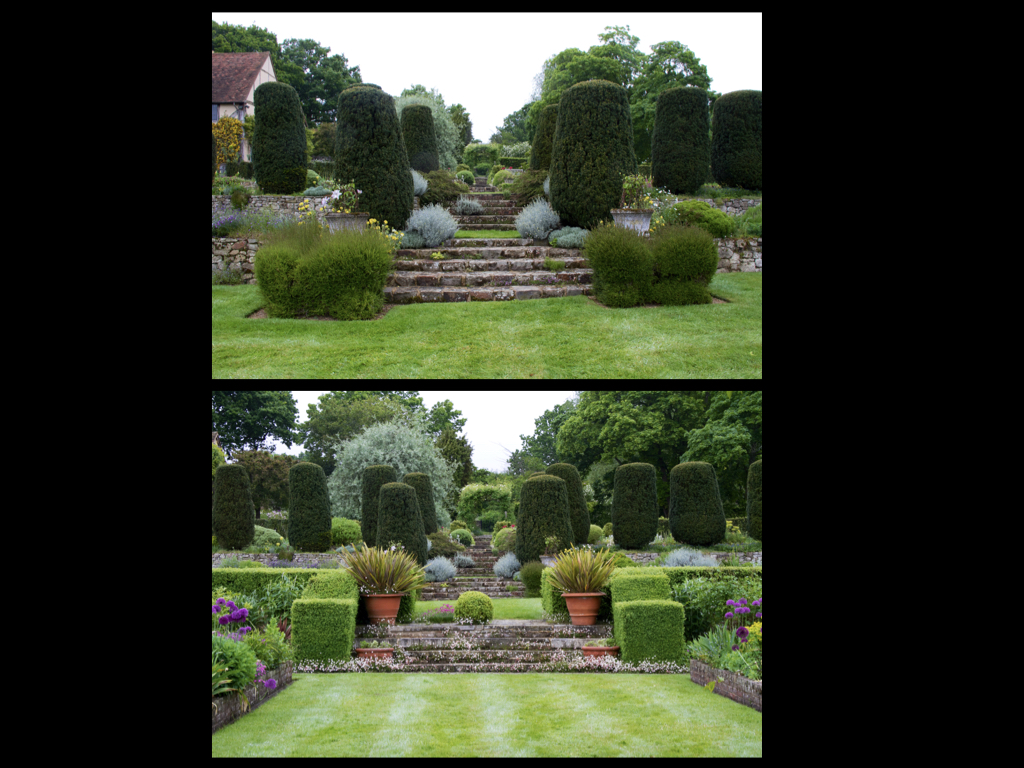
How many differences can you spot when you compare the two staircases and the surrounding areas?
Identifying these differences helped me to understand one of the ways in which that garden achieved its particular character. Details made the difference between ‘great’ and ‘just fine.’ And isn’t that what we all want for our gardens, that they be as good as they possibly can be?







Sensible approach () Taking photos every month I hope that you will open your garden to the public again in 2020 I would like to come back – I was ill prepared in 2019 It was 33 degrees and I was not expecting all the climbing best wishes Hans Stoger
Opening the garden this year is very unlikely due to all the health concerns. We also have many projects on the go that are not proceeding as rapidly as they normally would. But if we do open this year, I hope you will introduce yourself. Return visitors are doubly welcome!
I learned the black-and-white trick from a long-ago issue of Fine Gardening, but I never though to flip the photo after that!
A tip from a friend — increase the contrast in the photo to emphasize differences in light and dark areas.
Thank you for the kind words. I once thought of doing this shot from the spot over years. But it was when Charles was the only photographer in the house (ie many years ago) and it didn’t appeal to him. Now I think it was a great loss that I didn’t insist or get myself a camera then.
You have one now… and I continue to follow your lead, taking a photo on (more or less) the same day from (more or less) the same spot. Can’t wait to see them all come Jan. 2021.
I did a little video last year from the same spot (roughly) several times during the season, then stitched them together snow-to-snow with music. It was great fun and made me appreciate my garden’s seasons.
What a great idea, Janet. I rarely take videos and always enjoy seeing yours.
I love encouraging the B&W technique with folks in classes and consultations — it helps so much with shapes and textures as you write. Studying photographs is a great suggestion, too. I take a lot of photos, but haven’t done so in an analytic way! Blogging is such a great way to keep track (and I’ve found seeing older photos in current presentations provides a good reminder of change in the garden, too. It’s always so interesting to analyze how a garden “works,” from the vantage point of the gardener!
Comparing the old and new versions can be a real shock. A friend once suggested I cut down some trees to open up a view. I was appalled, but when I considered his advice and then followed it, I saw how right he was.